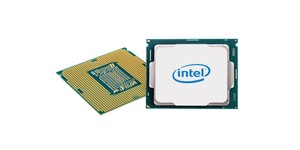
Invensas has announced that it will be unveiling its latest breakthroughs in multi-die dynamic memory (DRAM) packagaging at the International Symposium on Quality Electronic Design later this week.
Invensas' xFD technology, which will form the heart of the presentation by the company's vice president and chief technologist Richard Crisp, promises much: using multi face down packaging, xFD DRAM modules feature a separated data line for each die in the package. The result, Invensas claims, is a multi-die package with single-die performance in an ultra-thin profile.
Using xFD, Invensas claims that memory makers can cram two DRAM dies into the same footprint of a single die thanks to a reduction in thickness of 30 per cent. The use of ultra-short separated interconnects, meanwhile, boosts performance to that of single-die packages. Finally, reduced material costs and a parallel process flow for manufacturing means that xFD modules are significantly cheaper than alternative multi-die packaging technologies.
Invensas' xFD isn't the only solution to the need for growing component density, of course. It competes directly with through-silicon via (TSV) techniques, but Invensas claims xFD has a key advantage: as it uses the existing wire-bond manufacturing infrastructure, it's easy for manufacturers to adopt with little risk.
Currently, Invensas is targeting the data centre with its Dual Face Down (DFD) and Quad Face Down (QFD) technologies, promising significantly increased memory density for server applications. The technology has promise in other areas, however: mobile manufacturers can use the 30 per cent footprint shrink over competing packaging technologies to increase the size of the device's battery or reduce the overall dimensions, while overclockers will be pleased to hear about the improved heat dissipation characteristics offered by xFD.
Thus far, however, Invensas has yet score a big deal with a memory manufacturer to implement the xFD packaging technology in a mainstream product. The closest the company has come is a deal with bit-player memory maker Nanium in October last year. Should Crisp prove persuasive during his presentation at ISQED, that could change - and if xFD lives up to the company's claims, it's like to be a change for the better.
Invensas' xFD technology, which will form the heart of the presentation by the company's vice president and chief technologist Richard Crisp, promises much: using multi face down packaging, xFD DRAM modules feature a separated data line for each die in the package. The result, Invensas claims, is a multi-die package with single-die performance in an ultra-thin profile.
Using xFD, Invensas claims that memory makers can cram two DRAM dies into the same footprint of a single die thanks to a reduction in thickness of 30 per cent. The use of ultra-short separated interconnects, meanwhile, boosts performance to that of single-die packages. Finally, reduced material costs and a parallel process flow for manufacturing means that xFD modules are significantly cheaper than alternative multi-die packaging technologies.
Invensas' xFD isn't the only solution to the need for growing component density, of course. It competes directly with through-silicon via (TSV) techniques, but Invensas claims xFD has a key advantage: as it uses the existing wire-bond manufacturing infrastructure, it's easy for manufacturers to adopt with little risk.
Currently, Invensas is targeting the data centre with its Dual Face Down (DFD) and Quad Face Down (QFD) technologies, promising significantly increased memory density for server applications. The technology has promise in other areas, however: mobile manufacturers can use the 30 per cent footprint shrink over competing packaging technologies to increase the size of the device's battery or reduce the overall dimensions, while overclockers will be pleased to hear about the improved heat dissipation characteristics offered by xFD.
Thus far, however, Invensas has yet score a big deal with a memory manufacturer to implement the xFD packaging technology in a mainstream product. The closest the company has come is a deal with bit-player memory maker Nanium in October last year. Should Crisp prove persuasive during his presentation at ISQED, that could change - and if xFD lives up to the company's claims, it's like to be a change for the better.

MSI MPG Velox 100R Chassis Review
October 14 2021 | 15:04








Want to comment? Please log in.